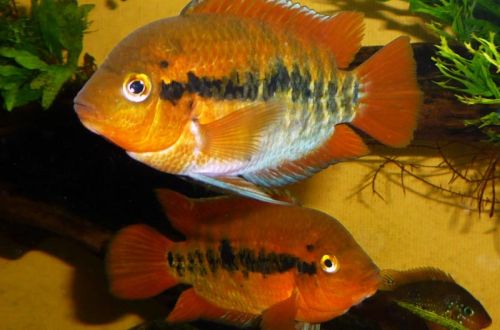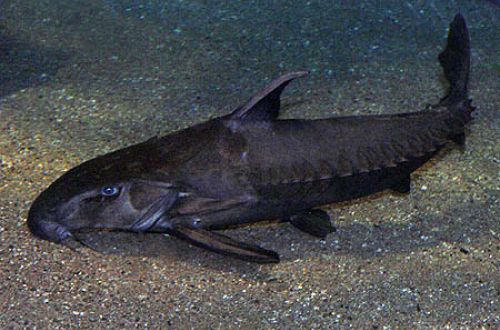
Diamond Fish Killy
Diamondfish Killy, scientific name Adinia xenica, belongs to the Fundulidae family. Surprising in its unpretentiousness and endurance species, however, is not suitable for a general aquarium, as it lives exclusively in brackish water. This feature of the content, coupled with a very modest coloration, makes it not very popular in the aquarium hobby. It is practically not represented on the European market, however, it is found among professional breeders.
Habitat
The first fish samples for subsequent scientific description were collected near the former large port of Indianol, located on the coast of the Gulf of Mexico in what is now Texas. It is now a ghost town, devastated by several hurricanes in the late 19th century.
The natural habitat covers almost the entire northern coast of the bay from the tip of Florida to Texas. The diamondfish prefers shallow (usually less than 30 cm deep) coastal lagoons, salt marshes, isolated pools and first order streams, usually in areas dominated by underwater vegetation and filamentous algae.
Description
Adult males reach a length of 5 cm, females are somewhat smaller. The body is high, the head is pointed. From the side, the shape of the fish, if you visually discard the fins, resembles a rhombus elongated horizontally. The coloration is light, sandy in color with rows of contrasting vertical stripes. The fins are transparent with numerous blue dots at the base.
Food
In the wild, they feed on just about anything they can find, a diet that includes blue-green algae, diatoms, plant bits, rotifers, nematodes, copepods, insect larvae, etc.
At home, they will accept all types of dry, frozen and live food with the mandatory inclusion of herbal supplements, for example, spirulina flakes or the like. It is worth noting that young individuals need more protein food, so live food is required for them. Serve food 2-3 times a day in the amount eaten in 5 minutes. All residues should be removed.
Maintenance and care
The main emphasis in the content of the Killy diamond fish should be given to the design. For several individuals, a tank of 60–80 liters is sufficient. Any substrate, you can even do without it, but the design will become incomplete. It is obligatory to have shelters in the form of snags, intertwined tree roots, heaps of stones, etc., forming grottoes and caves. Females and subdominant males will hide in them if necessary. From plants, preference should be given to hornworts and mosses with ferns.
The set of equipment includes a heater, an aerator, a lighting system and a simple filter with a weak flow rate, the fish do not like strong currents. A prerequisite for successful maintenance is brackish water, the optimal concentration of sea salt is in the range from 3–10 g. per 1 liter. Aquarium maintenance comes down to weekly renewal of part of the water with fresh water and periodic cleaning of the soil from organic waste.
Behavior and Compatibility
Due to special conditions (brackish water) it is incompatible with most fish species. Intraspecific relationships are built on a hierarchy between males, there will always be one alpha male in the group, the rest are attacked if there is no way to hide. The recommended combination is 1 male and 2-3 females.
Breeding / breeding
Breeding is quite simple if the aquarium is properly organized. Due to the fact that parents can eat their eggs and fry, it is advisable to spawn in a separate spawning aquarium, otherwise the offspring simply will not live to adulthood. A separate tank must completely match the water parameters and design with the main one.
With a harem content (1 male and several females), the mating season can begin from March to September. The beginning is determined visually: the male acquires a more intense color and begins to pursue females, in which the abdomen swells noticeably. Females are moved first to settle in, after a few days it is the turn of the male. A group of eggs (about 30 pieces at a time) is attached to plants. At the end of spawning, the parents return to the common aquarium. The incubation period lasts from 9 to 11 days, the fry appear fully formed, capable of accepting Artemia nauplii, ground dry flakes, micro worms, etc.





